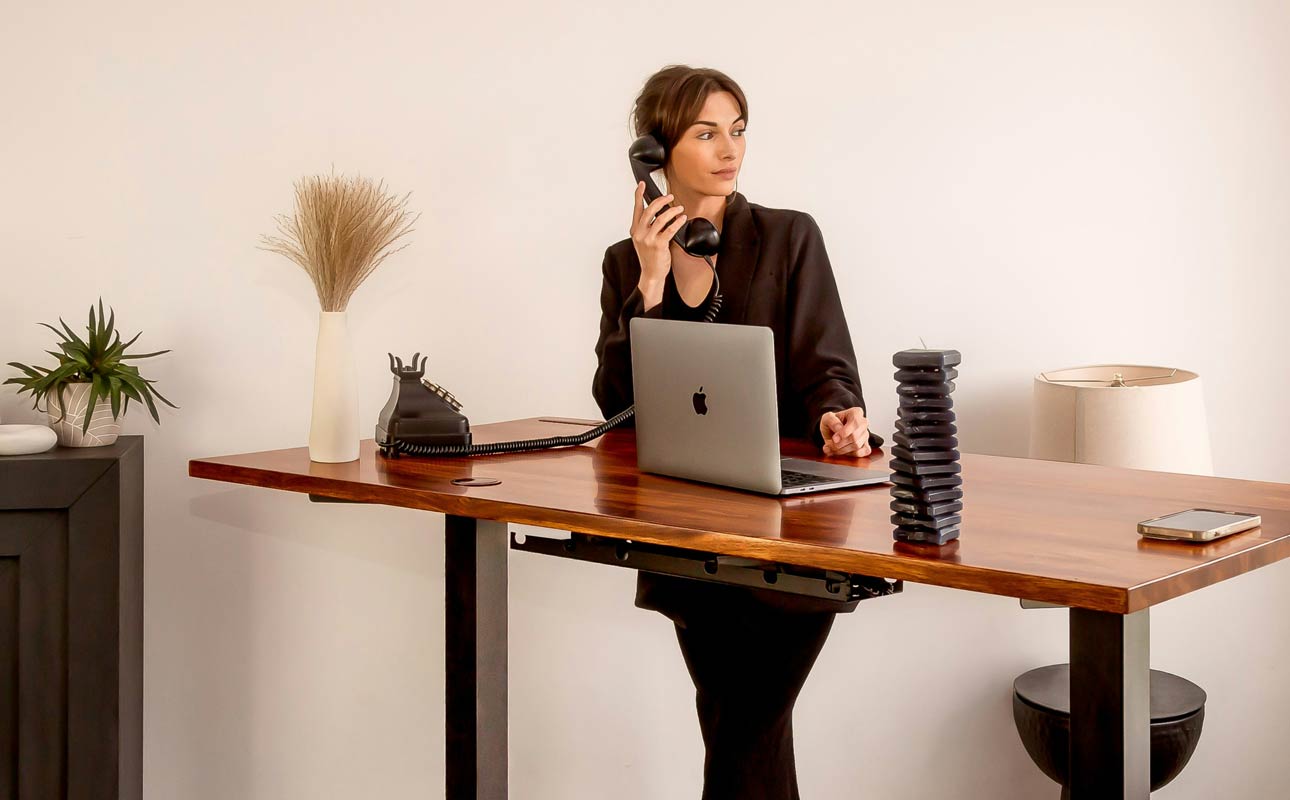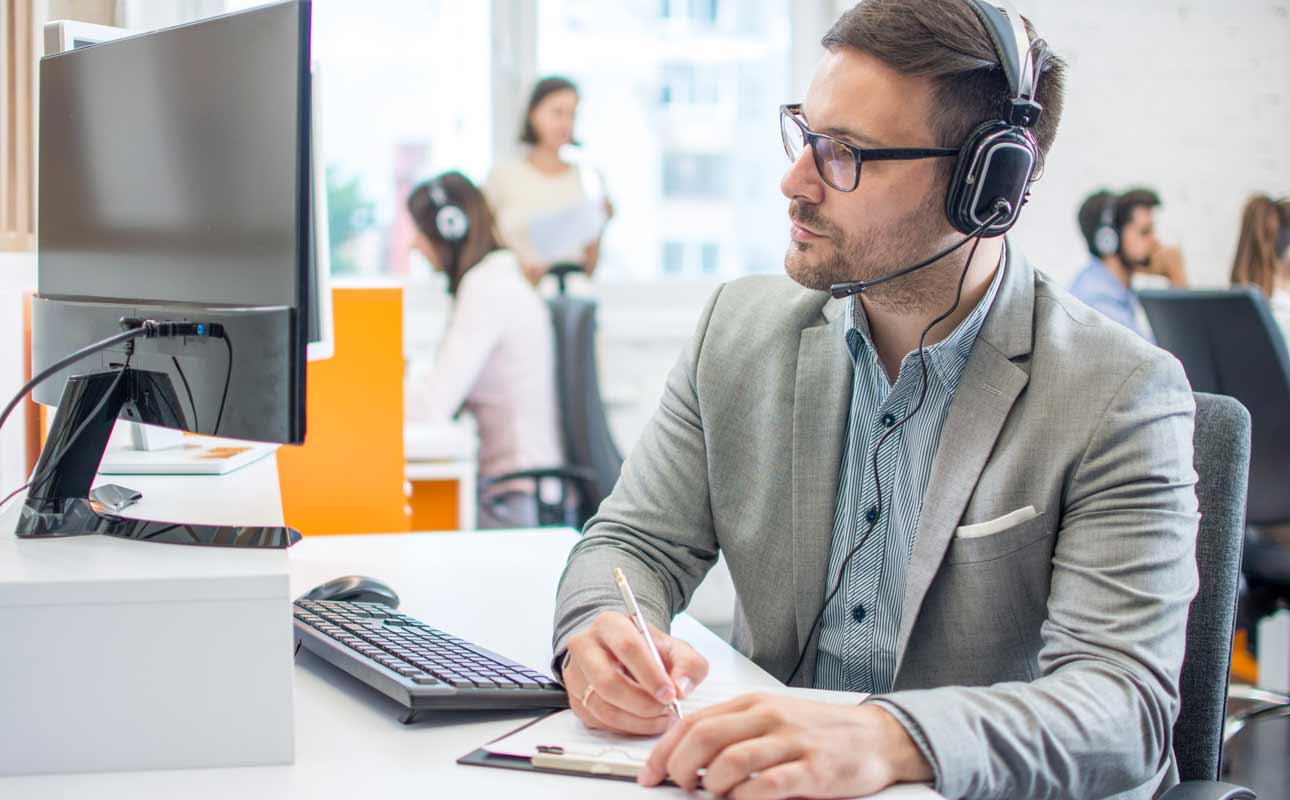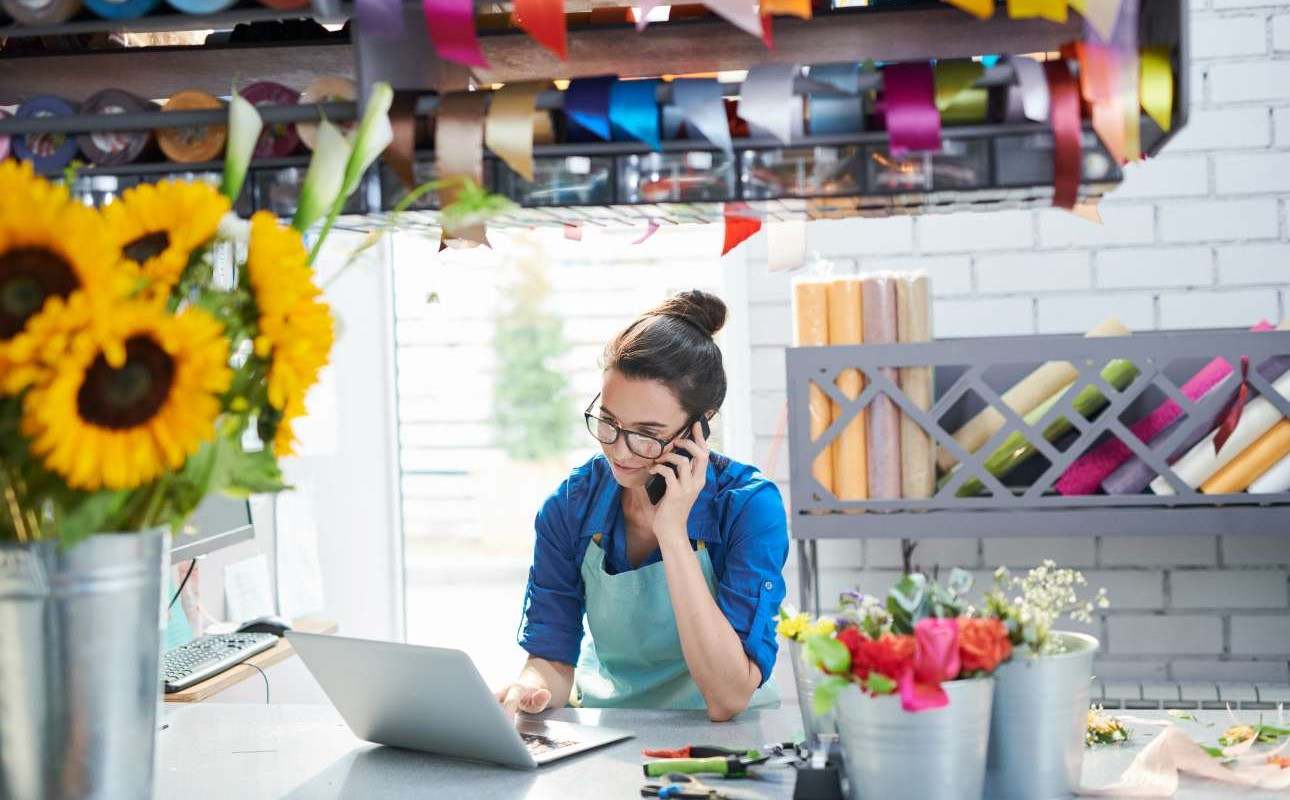How to design your home office for comfort and productivity

Designing and setting up a home office that is comfortable, stylish and maximized for productivity doesn’t have to be an expensive project. Use these tips to provide inspiration so you can make the most of your home office design without breaking the bank. But before you dive too deep in your planning phase, make sure you discuss your home office design ideas with those you live with to maintain harmony. After all, a family member or roommate might need to carve out their own home office niche, as well.
Ideas for home office furniture and decorations
Because you may work from home around 40 hours per week, invest in comfortable furniture, especially an office chair and desk. The Journal of Accountancy points out that “a traditional desk and chair create fatigue by restricting blood flow to our limbs and putting unnecessary pressure on our joints.” Consider the following options to make working from home more comfortable.
Office layout ideas for desk placement
The size of the desk you choose depends on several factors. A larger desk might be needed if you have a big monitor and multiple computer accessories, like a printer. If the room only has space for a small desk, other office supplies and accessories may need to be put in drawers or storage.There are different ways to organize your home office desk for comfort, depending on the size of your home office, budget and personal design preferences. You may be able to rearrange other furniture, like bookcases and chairs to get more comfortable and take advantage of your available space.
Think about your typical work day. Are you spending hours on the phone? Entering data in spreadsheets or documents? Coding software with a mouse? Do you like to stand every so often? Your work patterns should influence how you design your home office for comfort and ergonomic safety. As PC Mag points out, “The posture of the person sitting down really depends on what they’re doing with their hands.”
With that in mind, pay attention to factors, like the proper placement of monitors, keyboards and mice, to reduce strain on your body. The Mayo Clinic recommends that if you’re sitting at a desk for long periods, be sure to:
- Place your monitor about an arm’s length in front of your body
- Get a chair with good spine support and position it so your feet are flat on the floor and knees are parallel with your hips
- Put your keyboard directly in front of you so your wrists and forearms are in line
- Type with straight wrists, upper arms snug to your body, and hands slightly below your elbows
Traditional desk
Size, storage and color are some of the key features to consider with any desk. If your home office lacks a filing cabinet, choosing a desk that comes with drawers might be a good idea. Keep in mind that cloud storage has reduced the need for extensive file cabinets and printers, which both used to take up valuable real estate.
You will need desk space for all the equipment you use, like a laptop or a desktop computer with speakers, a second or third monitor, an external keyboard, an ergonomic mouse and a mouse pad.The price for a traditional desk can range from approximately $100 to more than $1,000. If you’re thrifty and a bit crafty, try giving a used desk a fresh new look with a new coat of paint or wood stain.
Standing desk
While standing desks are quite popular, Harvard Medical School points out that suddenly standing all day when you are used to sitting might put a significant strain on your body. To mitigate this risk, look for a standing desk that can be adjusted between standing and sitting mode. Prices vary considerably depending on features, with options ranging from a few hundred dollars to thousands.
Treadmill desk
Some people like the idea of adding exercise to their work day by using a treadmill desk. However, there are downsides to consider as well. Health, a healthy lifestyle publication, suggests you might want to avoid this type of desk if you have balance issues or if you get motion sickness when walking and focusing on a fixed target. It also might be difficult to use a computer, hear others on a conference call, or even speak without gasping for breath when walking on a treadmill. The typical price range for this type of desk is $500 to $1,000, so you might want to try before you buy one. A less-expensive option for those with a standing desk is to get a walking pad to place underneath your desk, or simply take a brisk walk outside on your lunch break.
Seating ideas for your home office
There are many different types of office chairs on the market to meet your style preferences, budget and comfort needs. For example, there are higher-priced Herman Miller office chairs that will set you back anywhere from $600 to more than $5,000, although you can pick up used ones at much lower prices. There are also office supply stores like Staples that offer hundreds of office chair options priced between $60 and $3,750. To save money, look for secondhand furniture at resale shops or on websites like Nextdoor. In addition, companies sometimes sell their used office chairs and furniture.
With so many office chair options on the market, it can be overwhelming to pick the one that fits your body and your budget. To narrow it down, visit a store that has office chairs and be like Goldilocks. Sit in a variety of chairs to see which type you find most comfortable. If in-store shopping is not an option, think about office chairs you have used in the past. Reach out to your friends and colleagues for recommendations. Before making your final choice, remember that you will spend many hours, possibly months or years, using an office chair, so choose carefully and get the best chair you can afford.
By the way, if you are tempted to purchase a yoga stability ball to sit on while you work, don’t. A Washington Post article cautions against it because the potential problems of sitting on an uncomfortable, unstable surface can outweigh any potential benefits. It’s easy to get distracted and bounce yourself onto the floor—don’t ask how I know that, but I’m glad I wasn’t on a video call at the time.

Ideas for home office lighting
According to a UCLA Health article, decades of studies have found that natural light has a positive effect on both mental and physical health. One survey of North American office workers reported that employees valued consistent access to both natural light and outdoor views over perks like chef-run cafes, in-house gyms and nap pods.
While ideal, finding an open space in your home with natural light can be challenging, but here are two tips when you are forced to set up camp in a closet or dimly lit basement:
- Create artificial sunlight. Purchase light bulbs that mimic daylight for any desk lamp, task lighting or overhead fixtures in your office.
- Head for the natural light. Pick up your laptop or phone and spend a couple hours away from your regular home office space to work in a sunny part of your home, a backyard or even a neighborhood park.
Lighting for video calls
Fortunately, natural light—the same office lighting that’s great for health—is flattering for video conference calls. Use an LED light (or natural light) to make your face bright and visible during calls.Here are a few items to help you put your best face forward:
- Table lamps. To test if a table lamp will provide adequate light, place it so the light shines on your face without making you squint, then conduct a test video call with a friend.
- USB LED lights. It can plug into a USB port on your laptop.
- Webcam with built-in lights. This option is convenient because the light and camera always stay together.
- Ring lights. Place your camera inside this hoop of lights to get a professional looking, diffuse light. Ring lights come in a variety of sizes and prices. Some include tripods and have clip-on functionality, allowing the angle to be adjusted as needed.
Spending some time and money on home office lights is a good investment to make your home office comfortable and add a touch of style. Doesn’t everyone want to be ready for their close-ups?

Ideas for home office decorations
There are many different kinds of home office decorations on the market. As you browse the possibilities, keep a few principles in mind. You’ll be spending a lot of time in your home office, so include items that not only bring you joy, but give you plenty of space to do your work.
- Art. Choose artwork that can withstand the test of time. For example, you might buy a framed poster from your favorite movie. If you prefer handmade or artisan items like personalized wooden items, take a look at Etsy or support a local artist. Keep in mind that your artwork may be visible to others in video conference calls, so choose wisely. You want colleagues to focus on the meeting, not wondering if that skull on your bookshelf is real.
- Plants. Research suggests that houseplants can improve productivity, so you may want to make sure your home office has the lighting and space for plants. Succulents, like an aloe plant, are good choices because they only require watering every few weeks. Keep in mind that some plants may be dangerous to children or pets. Think ahead about where they will go to make sure they get the proper amount of light to thrive. For example, southern-facing windows typically provide the most light, while north-facing locations are better for plants with limited light needs. You can also use special lamps designed for growing plants.
- Quotations. You might be inspired by framed quotes from motivational speakers, scripture or your favorite author.
- Personal photos. Consider moving a family photo or two into your home office.
- Travel souvenirs. If you have collected small travel souvenirs like models of famous landmarks, keeping those on your desk might give you a smile during a long day.
- Stress relief toys and accessories. Some toys and common office supplies can help people manage stress and anxiety. A fidget spinner, a paper clip, sticky tape and a smooth stone are a few examples.
Working from home: optimizing a small space
Don’t have a spare guest room available to use as a home office space? Here are some creative office ideas to make the most of your space.
- Share a room. Because a living or dining room may be used by other people in your home, see if you can find an unused corner for a desk. Or, be agile with flexible options like a lap desk, which can make it more comfortable to work from the couch.
- Put your work equipment in a closet. Think about turning an underused closet or the area beneath a stairwell into a mini office or at least a place to store all of your office equipment away at the end of the work day can help.
For more ideas, read our blog post: What to do when you only have a small space for you home office.
Working from home: communications software and hardware
Working from home means you can’t walk down the hallway to discuss ideas with a colleague. That’s why communication tools, like those offered by a VoIP phone system, are work-from-home essentials. The specific phone service, features and tools you choose will depend on your budget, preferences and work situation. For example, if your goal is to create the best home office for you to work for an employer, look at a home phone service like the one for the Ooma Home Phone Office Bundle. You’ll get concierge phone service, a desk phone, Ooma Telo and Ooma Linx. Plus, you can keep your home phone number and get a second phone number for work, and enjoy crystal-clear, reliable calls.
If you’re looking for the best home office design ideas for your personal business, you’ll have additional concerns, like home office safety for those times you meet clients in your home. And you’ll want a business phone system with more advanced phone features, like Ooma Office, which has more than 90 communication features.
Here are some features and tools to help you up productivity in your home office.
- Mobile business phone apps. A business phone system, like Ooma Office, makes it easy to make business calls via its mobile app. Employees can use their business phone numbers while working from home and avoid having to give their personal number out to customers.
- Headset. If you spend a lot of time on the phone, consider buying a headset so you can use your hands to take notes during a call.
- Video. A successful video conference call requires a few elements in a home office. Specifically, a quality web camera and microphone can make a big difference.
- Backup accessories. Imagine working from home with several hours of phone calls and video calls every day. If an accessory like a headphone breaks during a call, having access to a backup means getting connected again will take minutes, not hours. Consider buying backups of your most heavily used communication devices and extra batteries on hand.
- Broadband internet service. When working from home, multiple people may be using the same internet connection at the same time. Contact your internet service provider (ISP) for advice on ways to make the most of your internet connection.
- Mobile devices and accessories. Keeping a mobile device working smoothly when working from home is important. Consider ways to keep your devices (for example, phones, tablets and others) working well, such as buying a backup charging cable and protecting the device with a case.
Getting started with home office design
Whether you have a dedicated workspace with a door or an improvised home office in the living room, there are ways to make it better. If money is a concern, start with one or two of the home office inspiration tips from this article to make the most of your home office space and add others as your budget allows, or reach out to your company to see if they offer assistance to remote workers. If you’re an employer, check out Ooma’s remote worker checklist to help your team members set up their own home offices.

Learn more about how Ooma Office can help your business.
Thank you!
An Ooma Office Sales Representative will be in touch shortly.
866-573-0707


Learn more about how Ooma Office can help your business.
Just call 877-621-0515 or click this to CHAT. Or, fill out this form and someone will reach out to you shortly.



